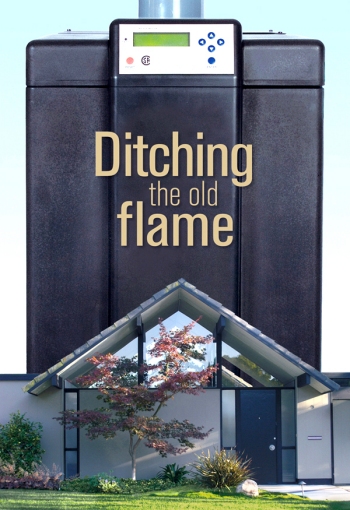Heat that Can’t Be Beat
 |
|
|
It can be an uncomfortable time, and a confusing one, too. Your Eichler’s radiant heat, once so calming and sure, suddenly sputters.
Palo Alto Eichler owner Cynthia Ishimoto noticed it when her boiler “was being very uneven, running really hot or really cold, signs it was faltering. I knew it needed to be replaced.”
It’s a move that also raises questions. Is it time to look at insulating your home? Inspect your radiant heating pipes? Should you choose a boiler dedicated only to heating the house—or a combo that handles hot water, too?
And just how efficient should your boiler be—80 percent? Or maximized to 98 percent?
Robert Horky, who studied heating in Austria, has worked on scores of Eichlers and understands how inefficient their original boilers can be. He calculates heat loss for his projects and takes into account his clients’ plans for insulation.
Horky’s Bay Area firm, R.H. Hydronics, repairs and replaces radiant-heat systems and installs boilers that are much more efficient and warm more quickly than old ones. He also favors European boilers. “They have many advantages over their U.S. counterparts,” Horky says.
But the bottom line, he adds, “upgrading to a new boiler, you can recoup the cost very quickly.”
We’ve got radiant boilers on our mind. You too? If so, here’s some food for thought—and a sneak preview of the new fall ’12 issue of CA-Modern: ‘Ditching the Old Flame.’




